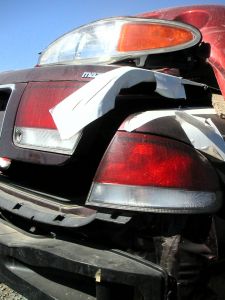 Nationwide, hundreds of thousands of car accidents occur every year. In Missouri alone, there were nearly 143,000 crashes throughout the state in 2011. Of those accidents, 716 resulted in a fatality and more than 35,000 caused injuries to vehicle occupants. As Springfield car accident lawyers, we know that a life-changing collision can occur in a matter of seconds, leaving victims to deal with the emotional and physical trauma of recovery.
Nationwide, hundreds of thousands of car accidents occur every year. In Missouri alone, there were nearly 143,000 crashes throughout the state in 2011. Of those accidents, 716 resulted in a fatality and more than 35,000 caused injuries to vehicle occupants. As Springfield car accident lawyers, we know that a life-changing collision can occur in a matter of seconds, leaving victims to deal with the emotional and physical trauma of recovery.
Recently, the City of Springfield Public Works Department issued its newest traffic crash report card, which reflects accidents that occurred in the Queen City between January 1 and June 30 of this year. According to the report, there were seven fatal crashes in Springfield within that time frame, compared to 13 fatal accidents during the same time frame in 2012. However, while the number of crash fatalities has decreased, the total number of accidents has increased, with 94 more collisions occurring this year, as has the number of injury accidents, with 18 more crashes resulting in injury.
What causes Missouri auto accidents?
The Missouri Highway Patrol identifies several driving behaviors that commonly contribute to crashes throughout the state. For example, excessive speed was a factor in 17.3% of all 2011 Missouri accidents and in 38.2% of fatal crashes. Additionally, alcohol use was cited as a "significant contributing factor in Missouri's serious traffic crash experience in 2011," with alcohol playing a role in 26.8% of 2011 fatal crashes.
What factors have contributed to the increase in Springfield car accidents in 2013?
• Dew. When temperatures drop during the overnight hours, dew and moisture forms on vehicles that are parked outdoors. Drivers are encouraged to "take time to clean windows and ensure the vehicle has warmed up to ensure good visibility."
• Glare. In late March, when the season begins to shift from winter to spring, the sun is positioned in an east - west alignment, which creates increased glare that limits visibility. Officials say glare often contributes to crashes around two hours after sunrise and around two hours prior to sunset, because the sun is so low on the horizon at those times of day. When the sun is in front of you, it can be extremely difficult to see other vehicles, objects and pedestrians that may be in your path, which often forces drivers to shield their eyes. Alternatively, when the sun is behind you, other vehicles' signals and taillights are less recognizable, so it can be tough to recognize a vehicle that is turning, slowing, or changing lanes.

